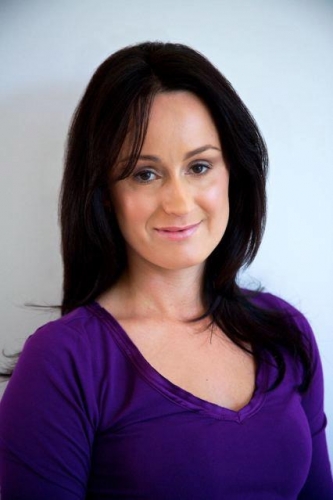A recent Australian Institute of Health and Welfare (AIHW) study shows the rate of serious hospitalised falls in residential aged-care facilities was almost six times higher than among older people living in the community.
Further, the rate of head injuries from falls by older Australians has nearly doubled over the past decade.
Subscribe for FREE to the HealthTimes magazine
The AIHW report shows that about 125,000 people aged 65 and over were seriously injured due to a fall in 2016-17.
The most common injuries were to the head (26%), hip and thigh (22%).
“Falls are common among older people and can result in fractures, head injuries, other serious injuries and even death,” says Flinders Professor James Harrison from the AIHW’s National Injury Surveillance Unit, based at Flinders University, Bedford Park.
FEATURED JOBS
St Vincent's Private Hospital
“In 2016-17, the rates of head injury among men and women were 832 and 865 cases per 100,000 population, respectively, compared with 469 and 477 cases per 100,000 in 2007-08,” said Professor Harrison.
The magnitude of the rise in fall-related head injuries over the decade to 2017 was more significant for those in older age groups.
“For those aged 85 and over, the increase in the rate of head injury due to falls was estimated to be 6.7% per year,” said Professor Harrison.
Women accounted for most of the hospitalisations for falls, making up 65 per cent of cases across all older age groups.
Similar to previous years, a fall on the same level due to slipping, tripping and stumbling (rather than, for example, a fall from furniture or steps) was the most common cause of hospitalised injury.
However, falls involving stairs and steps showed the steepest increase year on year.
“The estimated incidence rate of hospitalised fall injury among residents of aged-care facilities was nearly six times as high as the rate estimated for community-dwelling older people,” said Professor Harrison.
Physiotherapist
Kylie Monteith said there are many health and environmental factors that contribute to falls in older people.
Health factors contributing to increased fall risk
• Loss of balance,
• Reduced muscle strength
• History of a previous fall
• Health conditions
• Multiple medications
• Excessive alcohol intake,
• Dehydration and poor diet
• Poor eyesight
• Inappropriate footwear
• Lower limb pains
Environmental factors contributing to increased fall risk
• Poor lighting (or not turning lights on)
• Trip and slip hazards (objects left on the floor, loose mats and slippery floor surfaces)
• Uneven surfaces (steps over doorways, shower hobs, and stairs)
Many health factors contribute to older Australians being housebound, which is why Ms Monteith started a mobile physiotherapy service.
“We took physiotherapy and implemented it inside the four walls of the patient’s house, making the product extremely personal and effective, with respect to managing the environmental risk factors attached to falls for that patient.
“Physiotherapy input is vital in the management of falls and falls risk in the older population,” said Ms Monteith.
Programs specifically tailored to older clients.
• Muscle power, strength, and endurance (most pertinent is the lower limb)
• Balance
• Help with lower limb pain
• Shoe prescription and advice
• Advice regarding modifications at home
• Home visits assess
• Work closely with GP and communication regarding medications and affects
The best fall prevention strategies for older people include a prescription of home exercises, walking, appropriate footwear and aids, environmental assessment and regular visits with a GP, said Ms Monteith.
Nurses also play an imperative role in hospitals and residential aged care facilities to ensure fall risk is minimised.
“If it’s safe to do so, walk patients at every opportunity.
“Physiotherapists will often assess the client and prescribe the appropriate mobility aids and the required level of supervision or assistance.
“Nursing staff can make a significant difference to the mobility of the older population, whether in the acute setting in a hospital, further down the rehabilitation road or in a residential aged care setting.
“Nurses could ask older patients to do ten sit-to-stands in their chair prior to walking to a meal.”
Physiotherapist
Meg Lowry said many health professionals, including nurses, GP’s, pharmacists, and occupational therapists, must collaborate to reduce fall risk in older patients.
“The pharmacist review is good at identifying culprit drugs that tend to increase falls, and then liaise with their GP to find a safer solution.
“For people who are at a higher risk of falls, such as those with dementia or older adults discharging home from the hospital, an occupational therapist home visit can reduce their risk of falls.
“Hospital staff can reduce falls by identifying people at risk of falls at the time of admission and committing to reducing the number of times they relocate them.
“With every bed move, the risk of falls increases by 50 per cent. This is especially true for people with cognitive impairment.”
As for reducing falls in residential aged care, the SUNBEAM trial led by physiotherapist Jennie Hewitt holds promise with a reported reduction in falls by 55 per cent.
“The SUNBEAM trial … is a really well-designed exercise program involving both balance training and strength training with resistance machines and the results are convincing.”
However, while older age is associated with a higher risk of falling, simply getting older does not cause falls, said Ms Lowry.
“It is often the case that as you get older, you move less and you choose activities that are less challenging on your muscles, your brain, and your vestibular system.
“The 90+ Study showed that people who reported at least 30 minutes a day of active exercise in their 60’s to 70’s had a lower likelihood of falling in their 90’s.
“Staying as active as possible in mid-life and early old age seems to reduce your risk of falls decades later.”













